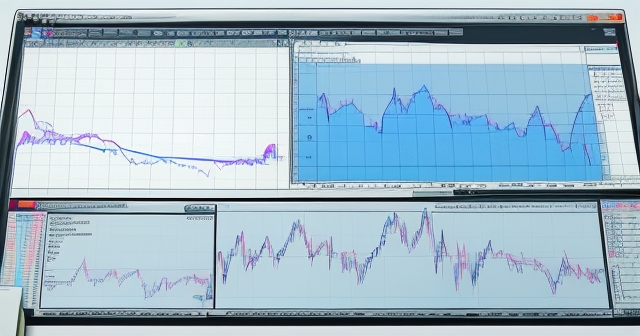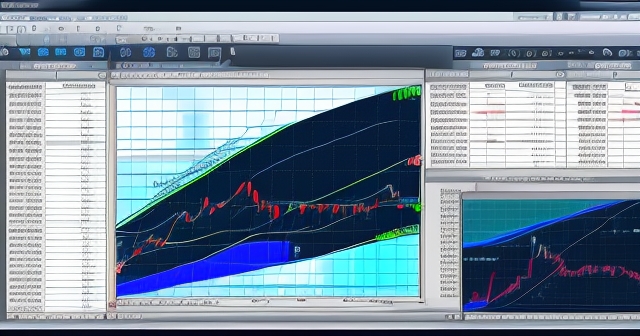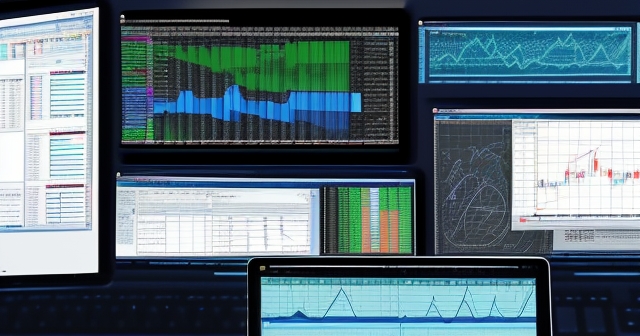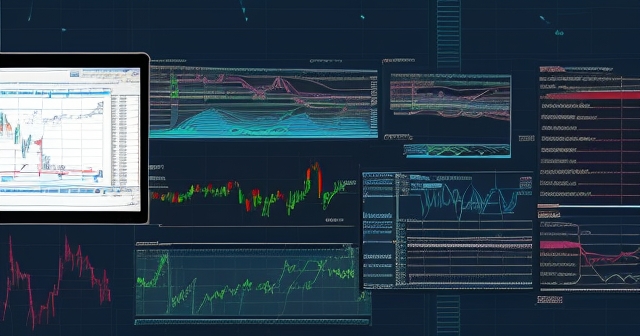
tradingplan: 10 Essential Steps for Creating Your Successful Trading Blueprint
Table of Contents
ToggleBuilding Your Foundation: A Comprehensive Guide to Creating a Trading Plan
Stepping into the financial markets can feel exhilarating, yet without a clear map, it can also be overwhelming. Picture navigating a dense jungle without a compass or a satellite image – that’s often what trading without a plan feels like. We might stumble upon some success purely by chance, but consistent progress and survival become incredibly difficult. This is precisely why a robust trading plan isn’t just a good idea; it’s arguably the single most critical tool in your arsenal as a trader, whether you’re just starting out or looking to refine your existing approach.
A trading plan is essentially your personalized blueprint. It’s a pre-defined set of rules and decisions that outline exactly what you will trade, how much capital you will risk, when and how you will enter a position, and perhaps most crucially, when and how you will exit that position. Think of it as building a sturdy ship before setting sail into potentially stormy seas. The plan helps you make rational decisions *before* you’re faced with the emotional pressure of real-time market fluctuations, helping you maintain discipline when volatility hits.

In this comprehensive guide, we will walk through the essential components of constructing an effective trading plan. We’ll delve into setting clear objectives, identifying potential opportunities, defining precise entry and exit strategies, mastering the critical areas of risk management and position sizing, and establishing a framework for evaluating your performance and continuously improving your process. By the end, you should have a solid understanding of how to create a structured plan that can guide your trading journey, turning impulsive decisions into calculated actions.
Defining Your Destination: Setting Clear Trading Objectives
Before you can even think about *what* to trade, you must first define *why* you are trading and *what* you hope to achieve. This isn’t just about saying “I want to make money.” Your trading objectives need to be specific, measurable, achievable, relevant, and time-bound (SMART). Are you trading for supplemental income, long-term wealth building, or perhaps to learn a new skill?
Your objectives will heavily influence your chosen trading style. Are you interested in:
- Day Trading: Opening and closing positions within the same trading day, avoiding overnight risk. This requires high attention and quick decision-making.
- Swing Trading: Holding positions for a few days or weeks, aiming to capture moves within a larger trend. This balances shorter-term opportunities with less required day-to-day focus than day trading.
- Position Trading: Holding positions for weeks, months, or even years, focusing on major trends. This requires patience and a longer-term perspective, often relying more on fundamental analysis.
- Long-Term Investing: Holding assets for years or decades, focusing on fundamental growth and income. While distinct from active trading, the principles of planning (asset allocation, diversification) are equally vital.
Each style has different capital requirements, time commitments, and risk profiles. Your objectives should align with your financial situation, personality, and the amount of time you can realistically dedicate to trading. For example, if you have limited time and capital, aiming to become a full-time day trader within a month might be an unrealistic objective. Setting clear, achievable goals provides a necessary foundation and helps you select the right strategies and instruments for your plan.
Building Your Radar: Crafting Your Watchlist Criteria
With your objectives and trading style defined, the next step is determining *what* you will potentially trade. You can’t monitor the entire market simultaneously. Your watchlist is your curated list of securities (stocks, forex pairs, commodities, indices, etc.) that meet specific criteria, making them candidates for potential trades according to your strategy.
How do you decide what goes on this list? Your criteria should be directly linked to your trading style and the type of analysis you employ. Do you focus on:

- Technical Analysis: Studying price charts, patterns, and indicators to predict future price movements. Your criteria might include securities forming specific chart patterns (like basing patterns), trading near key support or resistance levels, or showing momentum according to indicators like moving averages.
- Fundamental Analysis: Evaluating a security’s intrinsic value based on economic, financial, and qualitative factors. Your criteria might include companies with strong earnings growth, low debt-to-equity ratio (D/E ratio), high dividends, or those considered an undervalued stock based on metrics like intrinsic value.
- Market Analysis: Considering broader market trends, economic indicators, earnings announcements, or sector-specific news. Your criteria could involve focusing only on instruments within a strong sector or trading strategies aligned with current economic conditions.
Your plan needs to clearly define these criteria. For instance, a swing trader using technical analysis might only add stocks to their watchlist that are above their 200-day moving average and are currently pulling back to a recognized support level. A long-term investor using fundamental analysis might only consider companies with consistent profitability and a track record of increasing dividends. This defined process prevents impulsive trading based on hype or news headlines; you only consider trades from your pre-qualified list.
If you’re considering trading different asset classes, such as currency pairs, your watchlist might include major, minor, or exotic forex pairs that exhibit specific volatility or trend characteristics suitable for your strategy. If you’re exploring various instruments, such as currency pairs or other CFD products, then Moneta Markets is a platform worth considering. Based in Australia, it offers over 1000 financial instruments, catering to both beginners and professional traders alike.
The Gatekeepers: Establishing Precise Entry Rules
Once you have a potential candidate on your watchlist, how do you decide *exactly* when to enter a trade? This is where your entry rules come in. These rules should be crystal clear and objective, leaving no room for guesswork or emotional influence in the moment of decision. They are the specific conditions that *must* be met before you initiate a long (buy) or short (sell) position.
Your entry rules are the practical application of your chosen analysis method. If you use technical analysis, your rules might be: “Enter long when the price crosses above the 50-period moving average *and* the Relative Strength Index (RSI) is below 70.” If you use fundamental analysis combined with a technical trigger, it might be: “Enter long a fundamentally sound, undervalued stock when its price breaks above a significant resistance level on the daily chart.”
Specificity is key here. Avoid vague rules like “Enter when the stock looks good.” Instead, define the exact price point, indicator reading, chart pattern confirmation, or news event that triggers your entry. This ensures consistency and allows you to backtest or analyze the historical effectiveness of your specific entry criteria. Your plan should document these rules explicitly for each type of setup you trade.
For example, a day trader might have entry rules based on intraday volume spikes and support/resistance breaks, while a swing trader might wait for a specific candlestick pattern to form after a price pullback to a major trendline. Whatever your style, define these gatekeepers rigorously. They are your first line of defense against poor trade selection.

Knowing When to Go: Designing Your Exit Strategy
Entering a trade might feel exciting, but defining your exit *before* you enter is often more critical for long-term profitability and capital preservation. Your exit signals dictate when you will close your position, whether it’s to take profit or cut a loss. Without pre-defined exit rules, fear and greed can take over, leading you to hold onto losing trades too long or sell winning trades too early.
A robust exit strategy typically involves two primary components:
- Target Price: This is the price level where you aim to take profits. It could be based on technical analysis (e.g., a resistance level, a measured move from a chart pattern) or fundamental analysis (e.g., reaching your calculated intrinsic value). Your plan should specify how you determine your target price for each trade setup. Do you take profit all at once, or scale out of the position partially as it reaches different targets?
- Stop-Loss Order: This is a crucial risk management tool. A stop-loss order is placed with your broker to automatically close your position if the price moves against you to a specific level. This limits your potential loss on any single trade. Your plan must define *how* you determine your stop-loss level. Is it based on a technical level (e.g., below the entry candle’s low, below a support level) or a fixed percentage of your capital?
| Component | Description |
|---|---|
| Target Price | Price level to take profits based on analysis. |
| Stop-Loss Order | Automatic closure of position to limit loss. |
The relationship between your potential profit (to target price) and potential loss (to stop-loss) is your risk-to-reward ratio. A good trading plan often seeks trades with a favorable ratio (e.g., aiming for $2 profit for every $1 risked). Defining both entry and exit *before* taking the trade is the cornerstone of systematic trading. It removes subjectivity from the most critical moments of a trade’s life cycle.
Safeguarding Your Capital: The Art of Risk Management
Risk management is the bedrock of successful trading. No matter how good your entry signals are, you will have losing trades. The primary goal of risk management is to ensure that these losing trades do not severely damage your total portfolio capital. This means protecting your downside and ensuring you can survive periods of losing trades.
A fundamental principle of risk management is defining the maximum percentage of your total trading capital that you are willing to risk on any single trade. This is your risk per trade percentage. A common guideline is to risk no more than 1% to 2% of your capital per trade. Why so low? Because even a series of losing trades won’t wipe you out quickly. If you risk 1% per trade, it would take 100 consecutive losing trades (without any wins) to lose your entire capital – a highly improbable scenario for any reasonable strategy.
Your risk tolerance plays a significant role here. If you are risk-averse, you might choose to risk less than 1%. If you are comfortable with more volatility, you might risk slightly more, but rarely exceeding 2-3% for a single trade. Your trading plan must explicitly state your risk per trade percentage.
Furthermore, risk management extends beyond individual trades. It includes considering overall portfolio risk, perhaps through diversification across different asset classes, sectors, or strategies. It also involves being aware of significant market events (like earnings announcements or economic indicators) that could introduce unexpected volatility. A robust trading plan systematically addresses how you will mitigate these various forms of risk.

The Right Fit: Understanding Position Sizing
This is where risk management meets practical execution. Position sizing is the process of determining *how many* shares, contracts, or units of a security you will buy or sell for a particular trade. This calculation is directly linked to your defined risk per trade percentage and the placement of your stop-loss order.
Here’s the fundamental calculation:
Number of Units = (Total Trading Capital * Risk Percentage per Trade) / (Distance from Entry Price to Stop-Loss Price * Value per Unit)
Let’s break this down with an example:
- Suppose your total trading capital is $10,000.
- Your risk percentage per trade is 1% ($100).
- You want to buy Stock XYZ at $50.
- Your stop-loss is set at $49.50. The distance from entry to stop-loss is $0.50.
- For stocks, the value per unit (per share) is the price difference itself ($0.50).
| Calculation Step | Example Value |
|---|---|
| Total Trading Capital | $10,000 |
| Risk Percentage per Trade | 1% ($100) |
| Entry Price | $50 |
| Stop-Loss Price | $49.50 |
| Number of Shares to Buy | 200 shares |
Using the formula: Number of Shares = ($10,000 * 0.01) / ($50 – $49.50) = $100 / $0.50 = 200 shares.
In this example, you would buy 200 shares of Stock XYZ. If the price hits your stop-loss at $49.50, you would lose $0.50 per share * 200 shares = $100, which is exactly 1% of your $10,000 capital.
This calculation ensures that no single losing trade, regardless of the stop-loss distance, results in a loss exceeding your pre-determined risk tolerance for that trade. Your trading plan should outline the specific position sizing formula or method you will use for each type of instrument you trade, as the “Value per Unit” can differ for things like futures contracts or forex pairs.
Trading different instruments requires careful attention to contract sizes, pip values (for forex), and margin requirements. When selecting a platform to execute your trades across various instruments like forex or CFDs, the platform’s capabilities are key. In selecting a trading platform, Moneta Markets‘ flexibility and technical strengths are worth noting. It supports major platforms like MT4, MT5, and Pro Trader, combining high-speed execution with low spread settings for a good trading experience.
The Cornerstone: Why Discipline is Non-Negotiable
You can have the most theoretically perfect trading plan in the world, but it’s utterly worthless if you don’t have the discipline to follow it. Emotions – primarily fear and greed – are the undoing of countless traders. Volatility can trigger panic, causing you to abandon your carefully set stop-loss. A winning streak can lead to overconfidence, prompting you to take larger positions or deviate from your entry rules.
Adhering to your plan requires conscious effort, especially when things aren’t going as expected. This means:
- Only taking trades that meet *all* your entry criteria.
- Placing your stop-loss and target orders as soon as you enter the trade and *not* moving your stop-loss further away if the trade goes against you.
- Taking profits at your pre-defined target price(s) rather than hoping for an infinite move in your favor.
- Avoiding revenge trading after a loss.
- Not chasing trades you missed.
Treating your trading plan as a strict set of instructions, like a pilot following a flight checklist, is crucial. When you feel strong emotions rising, step away from the screen if possible. Review your plan. Remind yourself that consistency comes from execution, not prediction. Cultivating routines around your trading – such as reviewing your watchlist at specific times, planning trades before the market opens, and reviewing trades after the market closes – can help build the discipline needed to stick to the plan.
Learning from the Journey: Evaluating Your Performance
Once you start executing your plan, you need a system to track and evaluate your results. This is where a detailed trading journal becomes indispensable. It’s more than just a record of your wins and losses; it’s a tool for continuous learning and improvement.
For each trade, your journal should record:
- The date and time of entry and exit.
- The security traded and your position size.
- Your specific entry and exit prices.
- The stop-loss and target prices you set *before* entering.
- The reasons for entry (which specific criteria were met?).
- The reasons for exit (hit stop-loss, hit target, time expired, etc.).
- The net profit or loss.
- Screenshots of the chart at entry and exit.
- Your emotional state during the trade (did you follow the plan? Did you feel panic? Confidence?).
| Performance Metric | Description |
|---|---|
| Win/Loss Ratio | Percentage of profitable trades. |
| Average Win vs. Average Loss | Comparative analysis of wins to losses. |
| Drawdown | Peak-to-trough decline in capital. |
| Theoretical Trade Expectancy | Expected average win or loss per trade. |
Regularly reviewing your trading journal allows you to evaluate performance objectively. You can calculate key metrics such as:
This evaluation process helps you identify what parts of your plan are working and what aren’t. Are your entry signals effective? Are you exiting trades too early or too late? Are your stop-loss levels being hit too frequently? The data from your journal provides actionable insights, moving you beyond subjective feelings about your trading results.
The Living Document: Refining and Adapting Your Plan
Your trading plan is not a static document you create once and never look at again. The markets are dynamic, and you as a trader are constantly learning and evolving. Therefore, your plan must be a living document, subject to periodic review and refinement. Based on your performance evaluation, market conditions, and increasing experience, you should be prepared to make adjustments.
How do you refine plan effectively?
- Analyze the trades that failed: Did they share common characteristics? Were your entry criteria too loose? Was your stop-loss too close?
- Analyze the trades that succeeded: What went right? Can you find more trades with similar setups?
- Review your risk management: Is your risk per trade appropriate for your capital size? Has your risk tolerance changed?
- Consider market structure changes: Has the market shifted from trending to range-bound, or vice versa? Does your current strategy still fit the prevailing conditions?
- Evaluate your emotional patterns: Are certain market situations or trade outcomes triggering emotional, unplanned decisions? How can your plan or routines help mitigate this?
Refinement doesn’t mean abandoning your plan every time you hit a rough patch. It means making calculated adjustments based on statistical evidence from your trading journal. It might involve tightening your entry criteria, experimenting with different exit strategies, or adjusting your position sizing formula. Document every change you make to your plan and why you made it. This iterative process of execution, evaluation, and refinement is key to long-term survival and improvement.
This phase is also where continuous learning comes in. Reading books, taking courses, studying different market analysis techniques (like exploring options trading or futures markets if you previously only traded stocks or forex), and staying informed about economic indicators or major company news can provide new perspectives and tools to potentially enhance your plan. A commitment to ongoing education is a hallmark of successful traders.
Treating Trading Like a Business: The Path to Consistency
Many new traders approach the market like a casino, relying on luck or gut feelings. Professional traders, however, treat trading like a serious business. A trading plan is central to this professional mindset. Just as a business owner has a business plan outlining their model, operations, and financial projections, a trader needs a plan outlining their strategy, execution rules, and risk management protocols.
What does treating trading as a business entail?
- Having a Plan: This entire article is dedicated to this. Your plan is your business model.
- Adequate Capitalization: Businesses need sufficient starting capital; so does trading, relative to your chosen market and style.
- Managing Risk: Businesses manage financial risk; traders manage market risk.
- Tracking Performance: Businesses track revenue, expenses, and profitability; traders track win/loss ratios, drawdowns, and expectancy.
- Continuous Improvement: Businesses adapt to market changes and refine their processes; traders refine their plans based on evaluation and market conditions.
- Routine and Structure: Businesses have daily operations and routines; disciplined traders have routines for market analysis, trade execution, and journal review.
- Having Realistic Expectations: Businesses understand growth takes time and involves setbacks; traders understand profits are not guaranteed and losses are part of the process.
Embracing this business mindset shifts your focus from the outcome of any single trade to the long-term performance of your *system* (your plan). It encourages patience, discipline, and a commitment to the process, rather than being solely fixated on immediate profits. This perspective is strongly linked to the ability to achieve consistency over time.

Trading across global markets requires a reliable infrastructure. For those trading internationally or looking for a broker with strong regulatory backing, Moneta Markets is often a preferred choice for many traders. It holds multi-country regulatory licenses from bodies like FSCA, ASIC, and FSA, offers segregated client funds, free VPS, and 24/7 Chinese customer service, providing a comprehensive package.
Conclusion: Your Blueprint for Sustainable Trading
In the dynamic and often unpredictable world of financial markets, attempting to trade without a well-defined plan is akin to setting sail without a compass or a destination. While luck might grant you some initial success, it is rarely sustainable. A comprehensive trading plan serves as your essential blueprint, providing the structure, discipline, and objectivity required to navigate the complexities of the market effectively.
We’ve explored the core components: defining your clear objectives, establishing specific criteria for your watchlist, setting precise entry rules and exit signals (including crucial stop-loss orders and target prices), mastering risk management, calculating the right position sizing, and understanding the absolute necessity of discipline.
Beyond simply creating the plan, the ongoing process of diligently tracking your trades in a trading journal and objectively evaluating performance against key metrics is vital. This evaluation then fuels the necessary refinement and adaptation of your plan based on real-world results and changing market conditions. Ultimately, treating trading as a serious business, complete with structured processes and routines, fosters the mindset required for long-term survival and the potential for consistent success.
Building a trading plan takes time and effort, and sticking to it requires unwavering discipline. It won’t guarantee profits on every single trade – losses are an inevitable part of the journey. However, a robust plan is undeniably crucial for managing risk effectively, making rational decisions free from emotional impulses, and increasing your likelihood of navigating the markets successfully over the long term. Start building your blueprint today, commit to following it, and embrace the continuous learning process that trading demands.
tradingplanFAQ
Q:What is a trading plan?
A:A trading plan is a comprehensive set of rules and strategies that guides traders on what, when, and how to trade, ensuring disciplined decision-making and adherence to risk management.
Q:How often should I review my trading plan?
A:Your trading plan should be reviewed regularly, especially after significant trades or changes in market conditions, to ensure it remains effective and relevant.
Q:What factors should I consider when developing a trading strategy?
A:Consider your trading objectives, risk tolerance, market conditions, trading styles (like day trading, swing trading, etc.), and technical and fundamental analysis methods.
You may also like
Calendar
| 一 | 二 | 三 | 四 | 五 | 六 | 日 |
|---|---|---|---|---|---|---|
| 1 | 2 | 3 | 4 | 5 | 6 | 7 |
| 8 | 9 | 10 | 11 | 12 | 13 | 14 |
| 15 | 16 | 17 | 18 | 19 | 20 | 21 |
| 22 | 23 | 24 | 25 | 26 | 27 | 28 |
| 29 | 30 | 31 | ||||
發佈留言
很抱歉,必須登入網站才能發佈留言。